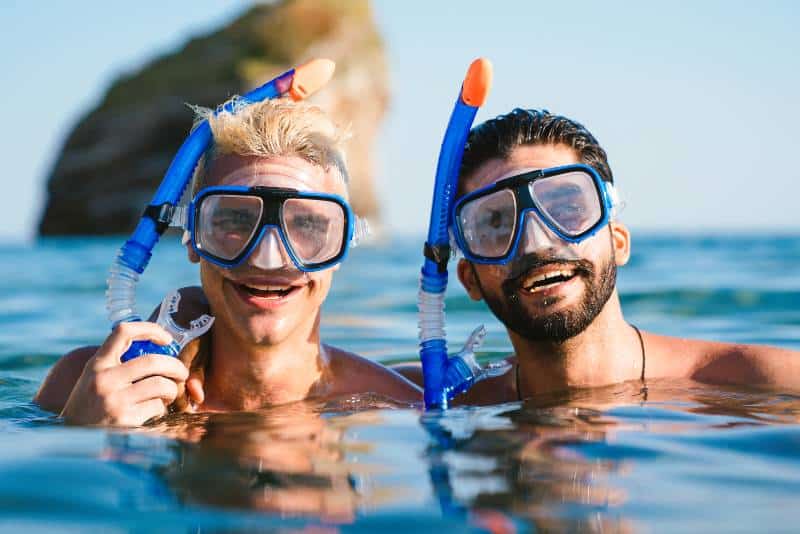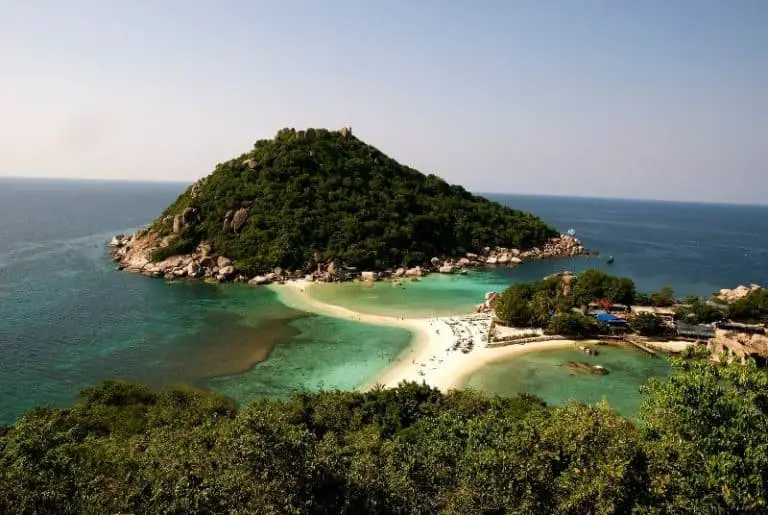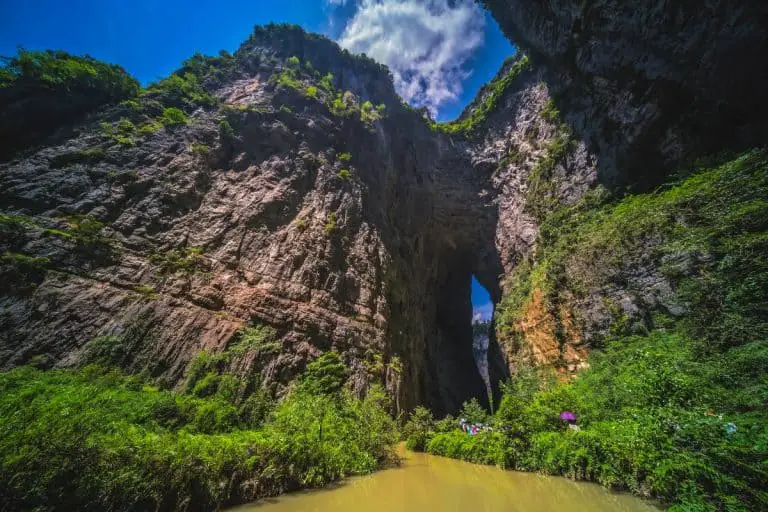Dive into Paradise: The Best Scuba Spots in Thailand
Are you ready to explore some of the world’s most spectacular underwater landscapes? Thailand is a popular destination for travelers looking to experience scuba diving and with good reason. From pristine shorelines to untouched coral reefs, this Southeast Asian country offers a wide variety of dive spots that cater to both beginner divers and experienced veterans alike. Whether you want an introductory course or are interested in exploring deeper depths, our guide will help you find out about the best places for scuba diving in Thailand. So grab your gear and let’s jump right into it!
Thailand is a great place to go scuba diving because it has a diverse range of underwater creatures and some of the best coral ridges in the world. You can have the chance to see Whale Sharks and Manta Rays while diving near the islands of Koh Phi Phi and Phuket.
Key Takeaways
- With crystal clear waters and a wide variety of marine life, Thailand’s top diving locations – Koh Tao, Similan Islands, Phi Phi Islands, Hin Daeng & Hin Muang, and Richelieu Rock – provide unique and unparalleled experiences for divers of all skill levels.
- Scuba diving is a rewarding but serious activity that requires appropriate training and respect for certain rules and regulations. Before diving in Thailand, it’s essential to understand the required certifications, local diving rules, and safety procedures to protect both yourself and marine life.
- To make the most of your diving experience in Thailand, it’s important to know when is the best time to visit each dive site, how to get there, where to stay, and which diving schools or operators to select. Additionally, while you’re there, you can add extra dimensions to your adventure by exploring Thailand’s above-water tourist attractions, such as its rich culture and local cuisine.

Top Locations for Scuba Diving in Thailand
Similan Islands
The Similan Islands National Marine Park has earned a reputation as Thailand’s best scuba diving site. Renowned for its exceptional marine life and breathtaking coral reefs – regarded as the finest in Asia – its dive locations range from easy-sloping coral reefs to rugged rocky terrains with strong currents.
The Similan Islands have Western dive sites that are mainly rocky, while the East Coast has sloping reefs. This diversity makes the Similan Islands a popular destination, particularly for Liveaboard Diving Trips. Divers from all around the world visit Thailand annually to experience the excellent diving in this region.
There are over 25 top scuba diving sites near the Similan Islands, Surin Islands, Koh Bon, Koh Tachai, and Richelieu Rock. This includes about 20 dive sites on the Similan Islands alone. Some of these sites are too large to explore in a single dive. For instance, Richelieu Rock is so impressive that it’s worth doing 2 or 3 dives there.
You have options for day trips, overnight tours, and liveaboards from Phuket or Khao Lak. Liveaboard diving has become increasingly popular in this area. There are various boats available with varying prices, comfort levels, and schedules. Feel free to reach out to Sunrise Divers for assistance in finding the perfect trip for your needs.
Koh Tao
The cost of Open Water courses on Koh Tao is approximately $350 USD (11,000 baht) without accommodation. It used to be common for dive schools on the island to bundle accommodation with their courses, but this is becoming less common, except for the largest dive resorts. If accommodation is included, it is a basic fan room, but you can upgrade to a nicer room at a discounted price.
Although it is becoming less frequent, some schools may hire a videographer to join dives 3 and 4 to create a 10-20 minute video resembling a music video of your experience. The video will be shown to the class at night as a group activity.
The cost of buying a copy of your graduation video may vary depending on the video company. They may charge a flat rate or charge according to the number of copies sold. The price can range from 1,000 to 3,000 baht ($32–97 USD). Alternatively, some schools offer still photos that you can purchase as part of a package. You can expect to pay about 300 baht ($10 USD) for one photo or 1,000 ($32 USD) for a set of several.
If you’re a new diver taking the Open Water course on Koh Tao, you’ll enjoy it no matter where you go. At this point, you’ll be so focused on learning skills and experiencing the wonder of breathing underwater for the first time that you won’t be able to perceive the differences between various dive sites.
Phi Phi Islands
The underwater world of Koh Phi Phi is breathtaking, with limestone walls, soft coral, and gorgonian fans. The rock formations also extend into the water, providing amazing diving opportunities with many hiding spots for critters. Additionally, there are coral gardens with sloping floors that can be explored during safety stops, making Koh Phi Phi a rich diving destination for all.
Be sure to watch the sand closely for any leopard sharks that may be resting. You may also spot mantis shrimp and seahorses, as well as triggerfish swimming around you. Look out for barracuda and octopus, along with blacktip reef sharks, nurse sharks, turtles, blue-spotted stingrays, and banded sea snakes in the blue.
Whale sharks often swim past Koh Phi Phi while following the trail of plankton from Malaysia to Myanmar. These amazing creatures can grow up to 10 meters long and are very gentle. It’s often a breathtaking sight to see them from above.
You can go scuba diving in Phi Phi throughout the year, but the ideal time to do so is from February to May. During this period, the waters are the calmest, clearest, and warmest, with temperatures ranging from 84-86ºF/29-30°C.
From June to September, the water temperature remains above 82°F/28°C even though it’s cooler than in other months. The visibility ranges from 10-15m in the low season to around 30m between January and April. However, more plankton in the water during this time of the year increases the likelihood of spotting manta rays and whale sharks. Throughout the year, the currents remain gentle.
Koh Phi Phi is an excellent location for diving at any time. There are 15 intriguing dive sites located throughout the island, making it ideal for divers of any skill level.
Hin Daeng & Hin Muang
If you’re a SCUBA diving enthusiast, you won’t want to miss out on exploring Hin Daeng and Hin Muang. These two dive sites are located in Thailand and are easily accessible from Koh Lanta as a day trip. These sites are known to have the deepest drop-offs in the country, making it a must-see for divers worldwide.
A depth limit of 18 meters will not suffice for diving at this location. Due to strong currents, it is necessary to descend and ascend using a line. The reef begins at approximately 16 meters and at times the only protection from the current is found at 20-22 meters or deeper.
Hin Daeng / Hin Muang offers some of the most stunning underwater scenery you’ll ever see. The steep walls adorned with soft corals and bustling schools of pelagic fish just outside the reef walls are already a breathtaking sight to behold. But what makes this dive site even more special is the frequent visits of Giant Manta Rays and Whale Sharks to the cleaning stations. They gracefully glide past you, leaving you awe-inspired. And there’s more! The steep walls have a hidden gem in the form of a large variety of macro creatures waiting to be discovered
Richelieu Rock
Richelieu Rock, located around 10km east of the Surin Islands and 100km NNE of the Similan Islands, is considered to be one of the top dive sites in Thailand. Although the very top of the rock is visible at low tide, it is mostly submerged at high tide due to being an isolated pinnacle.
Richelieu Rock is shaped like a horseshoe and has groups of rocks, pinnacles, overhangs, and small caves underneath. It’s north and west sides have steeper drops, while its south side is more gently sloped on the “inside” of the horseshoe.
The maximum depth of the dive is 35 meters, but it is recommended to dive at a range of 20-28 meters.
There is an abundance of soft coral at this pinnacle due to strong currents, which make it difficult for hard coral to thrive. However, it is possible to find shelter from the currents on one side of the large pinnacle. It is recommended to plan for at least two dives here, as it is too big to explore in just one dive. This is typically included in Liveaboard packages.
Pro tip: you should totally check out this article I wrote about The Thrifty Traveler’s Guide to Transportation in Thailand! It’s sure to help you out.
Practical Information about Scuba Diving in Thailand
Scuba diving in Thailand is a popular activity due to the country’s abundant marine life, clear waters, and numerous diving sites. If you’re planning to scuba dive in Thailand, here’s some practical information you’ll need:
Required Certifications
- Open Water Diver Certification: This is the minimum certification needed to dive in most sites in Thailand. You can get this certification from agencies such as PADI, NAUI, and SSI. The certification process includes completing a course with theory lessons, confined water dives, and open water dives. You must be at least 10 years old for junior certification and 15 years old for full certification.
- Advanced Open Water Diver Certification: For more challenging dive sites, such as deep dives and wreck dives, the Advanced Open Water Diver certification is required. This certification requires you to complete additional training, which includes deep diving and underwater navigation.
Equipment Rental
Most dive shops in Thailand provide equipment rental services. The standard diving equipment includes:
- Scuba tank
- BCD (Buoyancy Control Device)
- Regulator
- Dive computer
- Mask, snorkel, and fins
- Wetsuit
- Weights
Rental prices can vary, so it’s a good idea to shop around and compare prices. Make sure to check the condition of the equipment before renting. You can also buy your equipment instead like the Cressi Palau Long Fins should you prefer to turn your first diving experience into a future hobby.
Safety Tips
- Check Your Equipment: Before you dive, always check your equipment to ensure it is working properly. This includes checking your air supply, regulator, BCD, and dive computer.
- Know Your Limits: Never dive beyond your training level. Always stick to your planned dive and don’t be tempted to explore areas that are beyond your skill level.
- Monitor Your Air: Always keep an eye on your air supply. It’s good practice to surface with at least 50 bar (or 500 PSI) left in your tank.
- Don’t Dive Alone: Always dive with a buddy. This is not only a rule in scuba diving but also a safety precaution.
- Ascend Slowly: When you’re surfacing, always ascend slowly to avoid decompression sickness (also known as the bends). The general rule is to ascend no faster than 18 meters per minute.
- Stay Hydrated: Dehydration can increase the risk of decompression sickness. Make sure to drink plenty of water before and after your dives.
- Respect Marine Life: Don’t touch or disturb marine life. Not only is it harmful to the creatures, but some can also be dangerous if provoked.
- Don’t Fly After Diving: It’s recommended to wait at least 12 hours after a single dive and at least 18 hours after multiple dives before flying to avoid decompression sickness.
Lastly, always dive with a reputable dive operator. Check reviews and ratings to ensure they follow safety standards and have well-maintained equipment.
Travel Information
The most convenient way to get to Thailand is by air. The country’s main international airports are Suvarnabhumi Airport (BKK) and Don Mueang International Airport (DMK) in Bangkok, and Phuket International Airport (HKT) in Phuket.
From there, you can reach the major diving destinations:
Similan Islands
Located in the Andaman Sea, the Similan Islands can be reached from Phuket or Khao Lak. The best way is to take a liveaboard trip which usually lasts a few days. You can also take a speedboat tour from Khao Lak, which is closer to the Similan Islands than Phuket.
Koh Tao
The easiest way to reach Koh Tao is via a ferry from Chumphon or Surat Thani, both of which have airports with daily flights from Bangkok. Another popular route is to fly to Koh Samui, then take a ferry to Koh Tao.
Phi Phi Islands
The Phi Phi Islands are accessible by ferry from Phuket, Krabi, and Koh Lanta. The journey usually takes around 1.5 to 2 hours depending on the departure point.
Hin Daeng, Hin Muang, and Richelieu Rock:
These sites are best visited on a liveaboard trip, as they are located far from the mainland. Departures are typically from Phuket or Khao Lak. Richelieu Rock is closer to the Similan Islands and is often included in Similan live-aboard trips.
Accommodation Options
Thailand has a wide range of accommodation options to suit every budget.
- Budget travelers can find hostels and guesthouses, particularly popular on islands like Koh Tao and Phi Phi.
- For mid-range budgets, there are plenty of 3-star and 4-star hotels and resorts throughout the country.
- For those seeking luxury, there are 5-star hotels and luxury villas, especially in tourist areas like Phuket and Bangkok.
Other Local Attractions
Aside from diving, there are plenty of other attractions to explore in Thailand:
- In Bangkok, visit the Grand Palace, Wat Arun, and Wat Phra Kaew, and explore the city’s vibrant night markets and street food scene.
- In Chiang Mai, visit the old city, Doi Suthep Temple, and take part in a traditional Thai cooking class.
- In Phuket, visit Patong Beach, the Big Buddha, and Old Phuket Town. You could also take a boat tour to Phang Nga Bay.
- In Krabi, go rock climbing at Railay Beach, visit the Emerald Pool, or take a boat tour to the Four Islands.
- In Koh Tao, besides diving, you can try snorkeling, hiking, and exploring the island’s viewpoints.
- In Phi Phi Islands, visit Maya Bay (famous from the movie “The Beach”, please note that the bay is closed for rehabilitation and you can only view it from a boat), Viking Cave, and Monkey Beach.
To avoid upsetting the locals and ensure a fantastic travel experience, it is crucial to act accordingly when sightseeing in a foreign place. Make sure to familiarize yourself with the customs and etiquette of the region in advance of arrival, as well as keep up-to-date with any relevant regulations while touring popular destinations. This will ensure that you are following local laws and customs, showing respect to residents, and avoiding any unnecessary hurdles along the way.
Personal Experiences/Reviews
Thailand is often celebrated for its fantastic diving opportunities, and personal experiences from divers reflect that. Here are some reviews from TripAdvisor:
“Discover Scuba Diving” Course Experience: This reviewer had an excellent experience with the “Discover Scuba Diving” course. It seems this course is ideal for beginners or those who are a little nervous about diving. The reviewer praised their instructor, Sam, for ensuring they felt safe throughout the process.
Even one person who wasn’t a confident swimmer felt at ease during the course. This reviewer’s experience showcases how accommodating and patient diving instructors in Thailand can be, making it a fantastic location for beginners or less confident swimmers.
Professional and Friendly Staff: Another reviewer noted the professionalism and friendliness of the staff both in the office and on the dive boat. They were particularly appreciative of their divemaster, Daniel, who took great care of them.
This review highlights the importance of good service in creating a memorable diving experience. It seems many diving operators in Thailand put a strong emphasis on customer service, ensuring divers are comfortable, well-informed, and safe.
Overall, these personal experiences emphasize the excellent service, professional guidance, and welcoming atmosphere provided by diving operators in Thailand. Diving in Thailand can be an enjoyable experience, whether you’re a seasoned diver or just starting out.
Remember, while these positive reviews are encouraging, it’s always crucial to do your research and ensure you choose a reputable diving operator that upholds safety standards and has well-maintained equipment. Happy diving!

Best Places To Go Scuba Diving In Thailand FAQs
Can I rent equipment locally in Thailand for scuba diving?
Yes, most diving operators in Thailand will provide all the necessary equipment for you to rent. However, if you’re a regular diver it may be advisable to bring your own gear as this can save money in the long run.
How do I reach the top scuba diving locations in Thailand?
The best way to get to the top diving locations in Thailand is by boat. Most operators will provide transportation to and from the dive sites, whether that be a private tour or a group boat. Some locations may also be accessible via land if they are close enough. Be sure to check with your operator first before planning your journey.
Are there any safety considerations I should be aware of while scuba diving in Thailand?
Yes, it is always important to be aware of safety considerations when scuba diving. Make sure you are comfortable with the dive conditions and your equipment before beginning a dive. Ensure you have taken a proper training course from a reputable instructor.
What accommodation options are near the top scuba diving sites?
Most operators will provide accommodation options near the top dive sites. Some may even offer packages that include accommodation, food, and transportation. Be sure to ask your operator what they offer before booking a trip with them so you can find the best deal for your needs.
What other local attractions can I visit in addition to scuba diving?
In addition to scuba diving, there are plenty of other attractions in Thailand. You can explore the vibrant cities, take a cooking class, get pampered at a luxurious spa, or go island hopping. No matter what your interests are, you’re sure to find something to do that you’ll love!
Conclusion
With its stunning natural beauty, diverse marine life, and challenging dives, there is no shortage of amazing diving destinations in Thailand. Whether you are a beginner or an experienced diver, these top five sites offer something special for every level of explorer. Before heading out, however, it’s essential to make sure that you are properly trained and certified to dive in the area and understand all safety regulations.
To stay up-to-date on the latest scuba diving news from Thailand’s breathtaking waters, be sure to sign up for our newsletter at Electrik Living and receive all the exciting updates! At Electrik Living, we want everyone to have a safe and successful adventure with nature underwater. So plan accordingly and take advantage of everything that Thailand has to offer!






